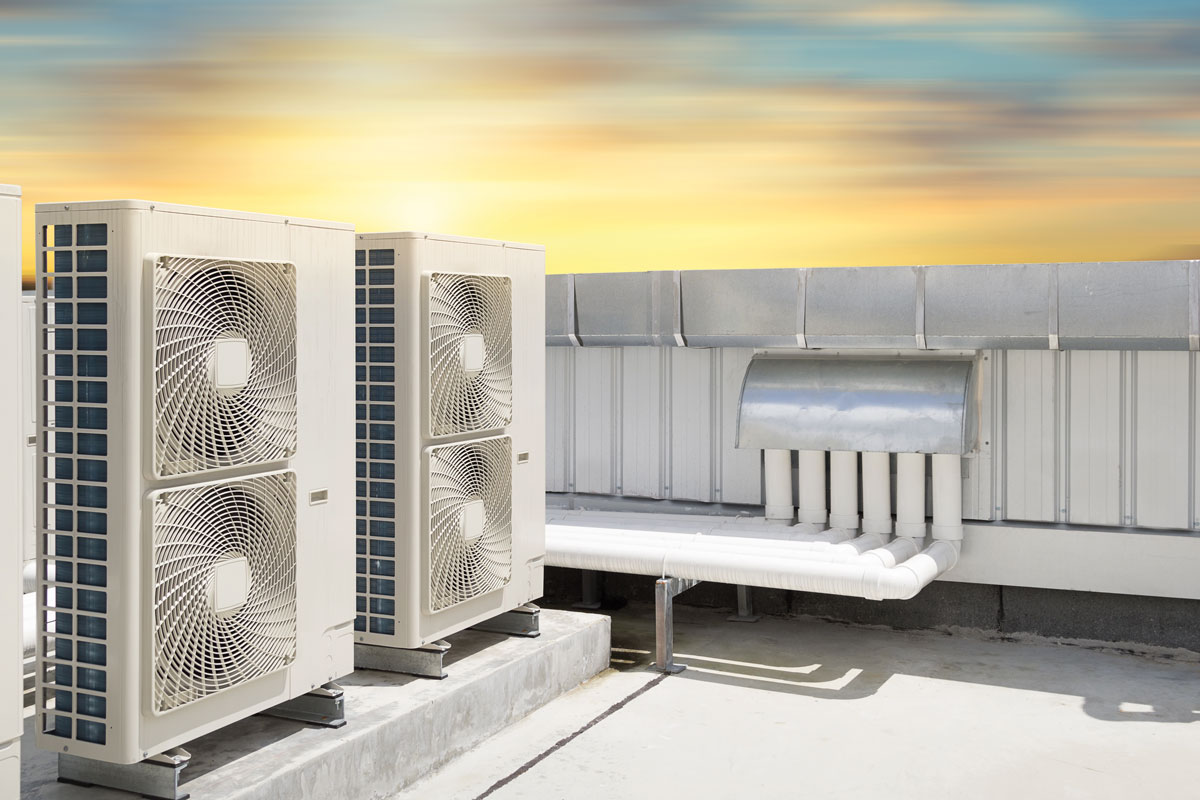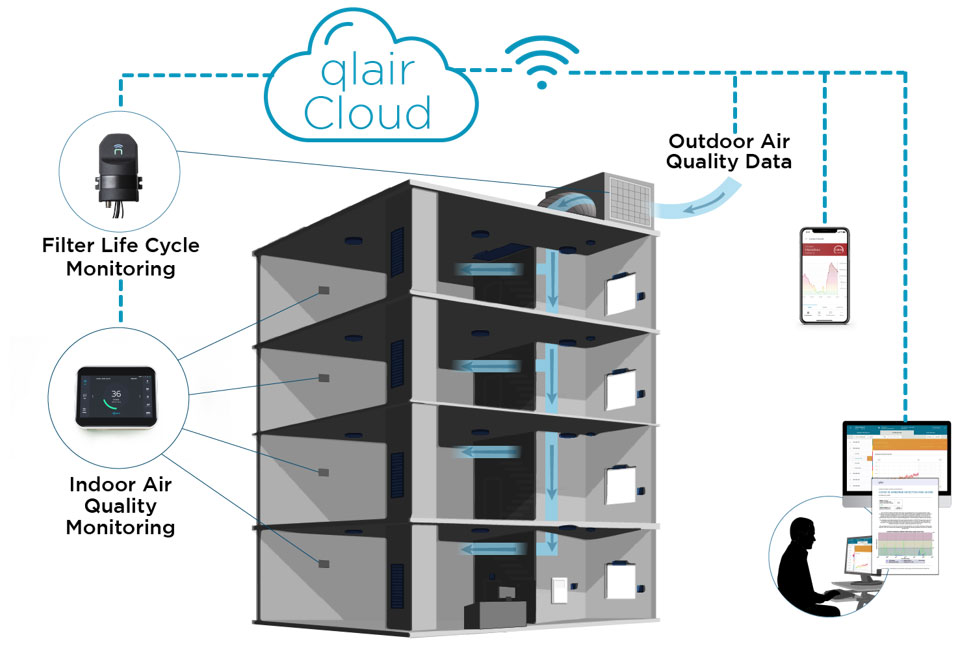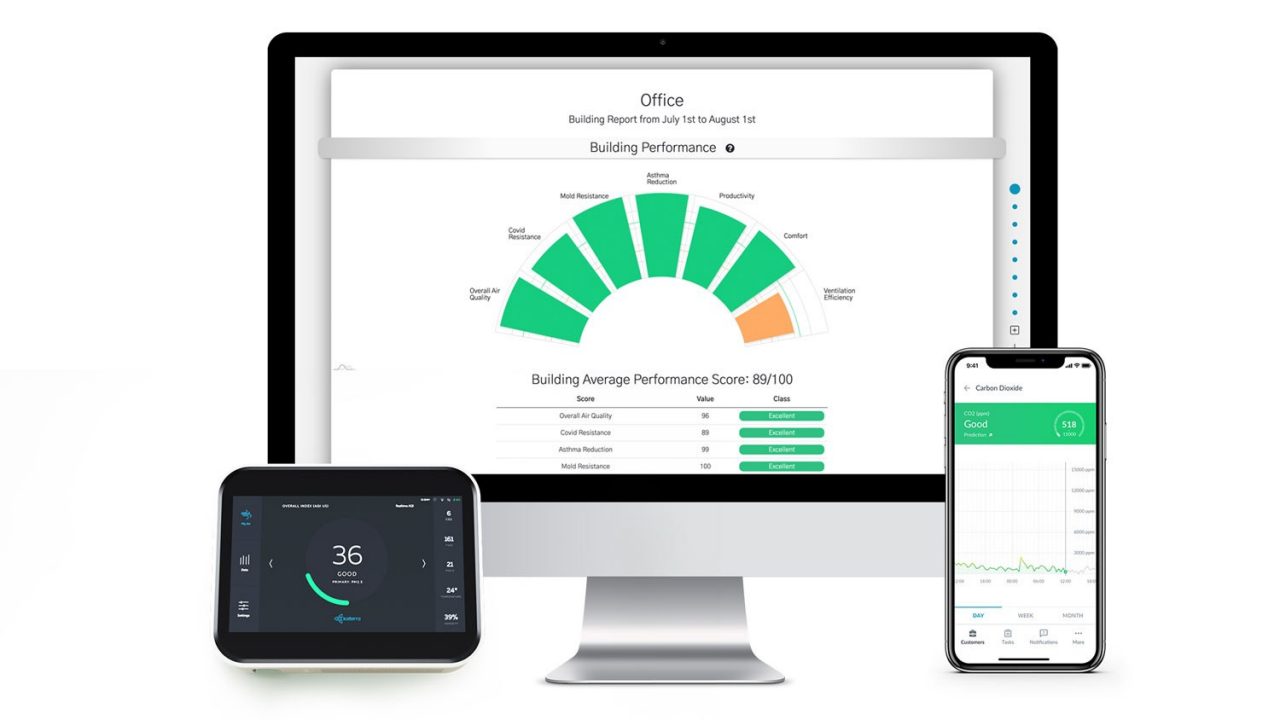In this article
Take a deep breath before you go back to the office - HVAC with MANN+HUMMELL
If you haven’t yet gone back to your workplace, or ventured into a shopping centre, you’ll be taking safe, breathable, COVID-19-free air for granted. But sooner or later we’re going to want our offices, factory floors, supermarkets and shops to feel as safe as our homes. How can we be sure they are?

Until last year, most people never thought about the air they breathed. ‘Aerosols’ were something with deodorant in them. ‘Airborne transmission’ meant little or nothing. Now air quality is not just an abstract concept, but could be a matter of life or death.
So when you’re dealing with something you can’t see, how can you ensure that the indoor environment is as safe as possible? And how can you keep it safe, but also comfortable and energy-efficient all at the same time?
The first step is to make the invisible visible, by monitoring air quality, you can use the collated data to interpret safety of the environment. Then you can make data driven decision, act on the results to make the air fit to breathe and contribute in energy. A smart Indoor Air Quality (IAQ) management platform makes it easy.
Case Study
£5k saving on running (and jumping, and throwing) costs. A university in the USA wanted to improve the operation and efficiency of the HVAC system in its athletic facility. qlair installed monitors to gather continuous, real-time air quality data, and to track critical air pollutants such as PM, CO2 and TVOCs. Investigation also revealed that there was no consistent schedule for managing ventilation, and filters were changed without any reference to performance data.

Benefits include:
- fewer HVAC system operating hours per day
- longer air filter life
- improved occupant comfort
- a reduction in energy costs of over $7,000 (approx. £5,000).
After careful assessment of air quality data and the facility’s systems, qlair made a number of changes. These included establishing a ventilation schedule, basing the Air Handling Unit operating schedule on real-time CO2 levels, selecting filters to reduce PM concentration, and using bipolar ionisation to lower TVOC levels.
What’s the risk?
What’s in the air we’re breathing is a strong indicator of the risk of Covid-19 airborne infection.
For example:
CO2 When carbon dioxide levels are high, it indicates that your space is not properly ventilated. More importantly, CO2 levels directly correlate with potential virus concentration in the air if an infected person is in the room. Research shows that infection risk indoors is significantly higher when not properly ventilated. According to the HSE, CO2 levels should be kept at 800ppm or below.
In environments with less than 40% Relative Humidity (RH), virus containing droplets lose their moisture quickly. Droplets become dry aerosols, capable of staying in the air for longer periods. Corona viruses remain infectious much longer below 40% and above 80% relative humidity. (Source: ASM Journals, Effects of Air Temperature and Relative Humidity on Coronavirus Survival on Surfaces).
PM2.5 Particulate Matter pollution at 2.5 microns (PM2.5) in size or smaller can penetrate our lungs deeply and put additional stress and potentially inflammations on our respiratory system which makes us more vulnerable to airborne infections. The Delta between indoor and outdoor PM 2.5 levels indicate the effectiveness of HVAC air filters, and particulate matter is a suspected to work as carrier for viruses making the virus particles ‘linger’ in the air for a longer time. Experts recommend to keep PM2.5 levels below 10ug/m³. (Source: Harvard University Fine particulate matter and COVID-19 mortality)
Qlair uses these risk factors and thresholds to calculate an easy to understand index score that helps to optimise your building for the highest occupant safety and communication by accessible data dashboard. The air quality management solution from qlair not only tracks all these pollutants, but also provides access to data and recommendations at any time, anywhere.

All-around air
Whether you are focusing on Sustainability or healthy buildings or both, qlair takes a holistic approach to air quality issues. So if you need a comprehensive assessment of air quality to establish a baseline for improvement, a qlair survey will assess both outdoor and indoor air, and identify sources of pollutants.
Whether you want data you can act on from qlair monitors, more cost-effective management of filter lifecycles in your HVAC system, or want to integrate and interpret existing data from your building management systems, qlair can help.
In fact, if you want to create buildings that are not just healthier, but also more efficient and cost-effective, then qlair is a breath of fresh air.
For more information on Fluid Power & Control solutions and to get in touch with one of our ERIKS Fluid Power Specialists or Fluid Control Engineers, please contact your local ERIKS Service Centre, who will be happy to discuss your options.
#MANNHUMMELL #HVAC #glair #glairCloud #CloudTech #AirQuality #AirBorne #Ventilation #FluidPower #ERIKS #ERIKSUK #LetsMakeIndustryWorkBetter

